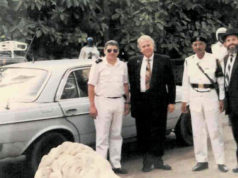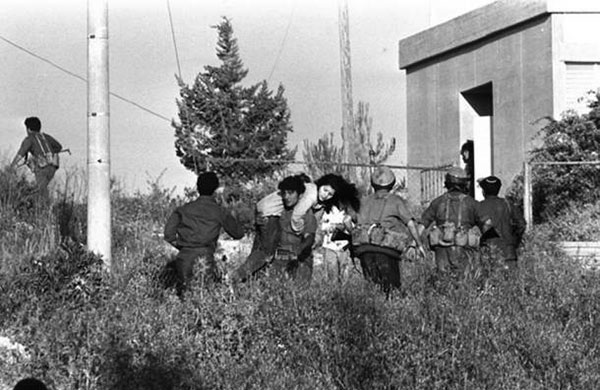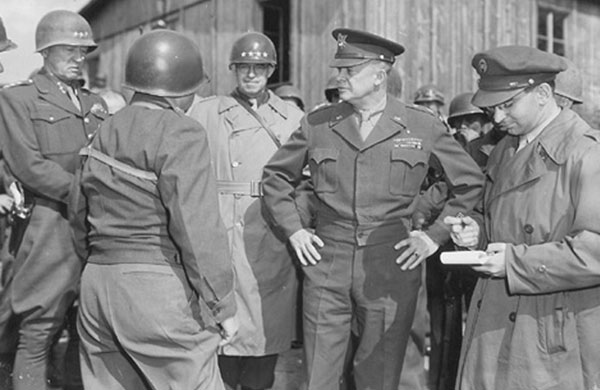 August is a lovely month. There are many free and fun events happening in New York and New Jersey.
August is a lovely month. There are many free and fun events happening in New York and New Jersey.
In Judaism, August is a somber month, due to Tisha B’Av, a day of mourning which commemorates the many tragedies that have befallen the Jewish people, including the destruction of the First and Second Temples. Many other notable events happened to the Jewish people in August.
August 2, 1492
On this date, our ancestors were expelled from Spain, the country they had done so much to enrich. More than 300,000 Jews found refuge in new countries. This was the day before Columbus made his historic voyage. The first thing he wrote in his log was, “after you expelled the Jews your majesties sent me with a fleet.”
August 8, 1654
The first Jews sailed for New Amsterdam from Holland aboard the Peartree and landed on August 22. Jacob Barsimson is considered the first Jewish immigrant to America.
August 17, 1665
The small colony of Surinam gave full rights to the Jews—mostly Spanish and Portuguese refugees—to practice Judaism and run their own affairs. This remarkably liberal charter was transferred over to the Dutch when they conquered the colony. They used it as a means of encouraging the Jews to remain.
August 17, 1790
The Hebrew Congregation of Newport, Rhode Island presented a congratulatory address to President George Washington on the occasion of his visit to their city. In his reply, Washington guaranteed the Jews religious liberty. His concluding paragraph perfectly expressed the ideal relationship among the government, its individual citizens and religious groups. It said:
“May the children of the stock of Abraham, who dwell in this land, continue to merit and enjoy the good will of the other inhabitants; while everyone shall sit under his own vine and fig tree, and there shall be none to make him afraid. May the Father of all mercies scatter light and not darkness in our paths, and make us all in our several vocations useful here, and in His own due time and way everlastingly happy.”
Washington’s letter, a foundation stone of American religious liberty and the principle of separation between church and state, was signed, simply, G. Washington.
Newport’s Congregation, now known as the Touro Synagogue, re-reads Washington’s letter in a public ceremony every year.
August 28, 1797
Four months after the entry of the French army into Padua, Italy, the provisional government decreed that Jews were able to live in every part of the city. Jews enlisted in the national guard, and the main street in the ghetto was renamed Via Libera. Unfortunately, as in most parts of Italy, the newly won freedom for Jews only lasted until the arrival of Austrian troops eight months later.
August 18, 1889
One hundred and twenty Jewish families arrived in Buenos Aires, leading to the modern Argentinean Jewish community.
August 29, 1897
The First Zionist Congress was convened in Basle, Switzerland by Theodore Herzl. It was represented by 197 delegates. The major achievements of the Congress were its formulation of the Zionist platform, known as the Basel Program, and the foundation of the World Zionist Organization. On the second day it was stated, “The aim of Zionism is to create for the Jewish people a home in Eretz Israel secured by law.” At the Congress, Herzl was elected President of the Zionist Organization.
August 23, 1903
At the Sixth Zionist Congress, Theodor Herzl proposed using territory offered by Britain, specifically Uganda, as a temporary shelter for Jews fleeing Eastern Europe and Russia. The Russian delegates, after a riotous debate, walked out and refused to return for the next Congress unless the plan was stopped.
August 14, 1929
The Jewish Agency for Palestine was founded. It was officially created by the 16th Zionist Congress, held in Zurich. It included a number of Jewish non-Zionist individuals and organizations that were interested in Jewish settlement in the land known as Palestine. They were philanthropic rather than political and many opposed talk of a Jewish State.
It was Chaim Weizmann’s initiative and was established on the principle of parity between Zionists and non-Zionists working together in the building of a Jewish national home
August 2, 1943
The Treblinka Revolt
Led by a small group of prisoners using primitive weapons and pistols, inmates at Treblinka attacked the guards and burned down the barracks. Between 300 and 500 prisoners escaped although most of them were either captured or turned over by Polish peasants. Though the revolt did not stop all activities, the German government decided to liquidate the camp.
August 1944
The War Refuge Board (WRB) brought 982 Jewish refugees from Italy to America. The Board wanted to create more places of asylum, and to influence other countries to provide sanctuary for World War II victims.
President Roosevelt, however, refused to establish any other havens. The board lobbied to publicly condemn the mass murder of Jews by the Nazis. Members also argued that the US air force should bomb Auschwitz. This, however, never happened.
By the end of the war in 1945 almost 200,000 Jews had been rescued by the WRB. About 15,000 Jews and more than 20,000 non-Jews had been evacuated from Nazi domain and about 10,000 Jews were protected within Nazi-controlled territory by underground programs funded by the WRB. The Board removed the 48,000 Jews in Transnistria to safe areas of Romania. About 120,000 Jews from Budapest also survived due in part to the WRB’s activities. However, WRB director Pehle described their work as too little, too late.
August 7, 1970
Israel and Egypt accepted the American proposal that led to a 90 day cease-fire between the two sides. However, subsequent US efforts to negotiate an interim agreement to open the Suez Canal and achieve disengagement of forces were unsuccessful.
August 2003
The Temple Mount is the holiest site in Judaism. Israel recaptured the Temple Mount during the 1967 Six Day War and it was open to the general public until September 2000, when Palestinians began throwing stones at Jewish worshipers after Ariel Sharon visited the area.
Following the onset of violence, the new Sharon government closed the Mount to non-Muslims, using checkpoints to control all pedestrian traffic for fear of further clashes. The Temple Mount was reopened to non-Muslims in August 2003.



